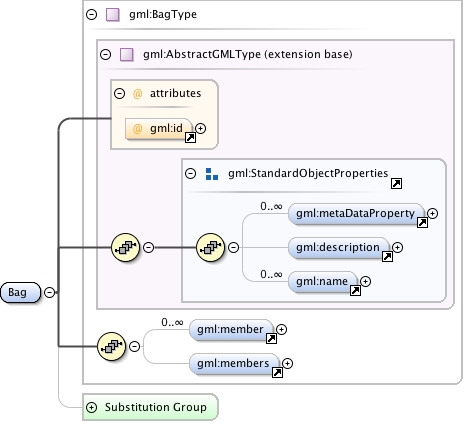| Namespace | http://www.opengis.net/gml | |||||||||||||
|
Annotations
|
|
|||||||||||||
|
Diagram
|
 |
|||||||||||||
| Type | gml:BagType | |||||||||||||
| Type hierarchy | ||||||||||||||
|
Properties
|
|
|||||||||||||
| Model | gml:metaDataProperty* , gml:description{0,1} , gml:name* , gml:member* , gml:members{0,1} | |||||||||||||
| Children | gml:description, gml:member, gml:members, gml:metaDataProperty, gml:name | |||||||||||||
|
Instance
|
|
|||||||||||||
|
Attributes
|
|
|||||||||||||
|
Source
|
|
|||||||||||||
| Schema location | http://schemas.opengis.net/gml/3.1.1/base/gmlBase.xsd |